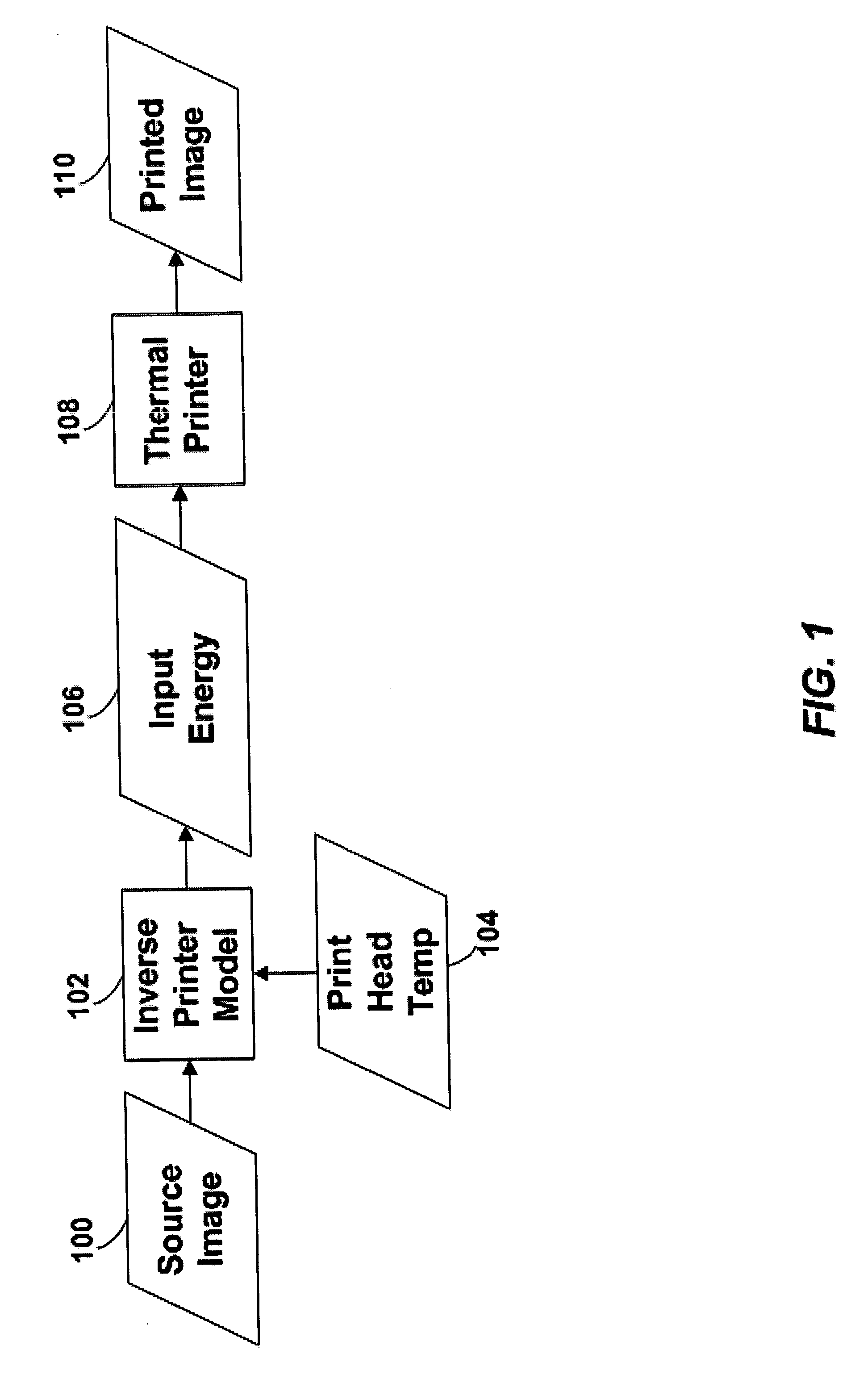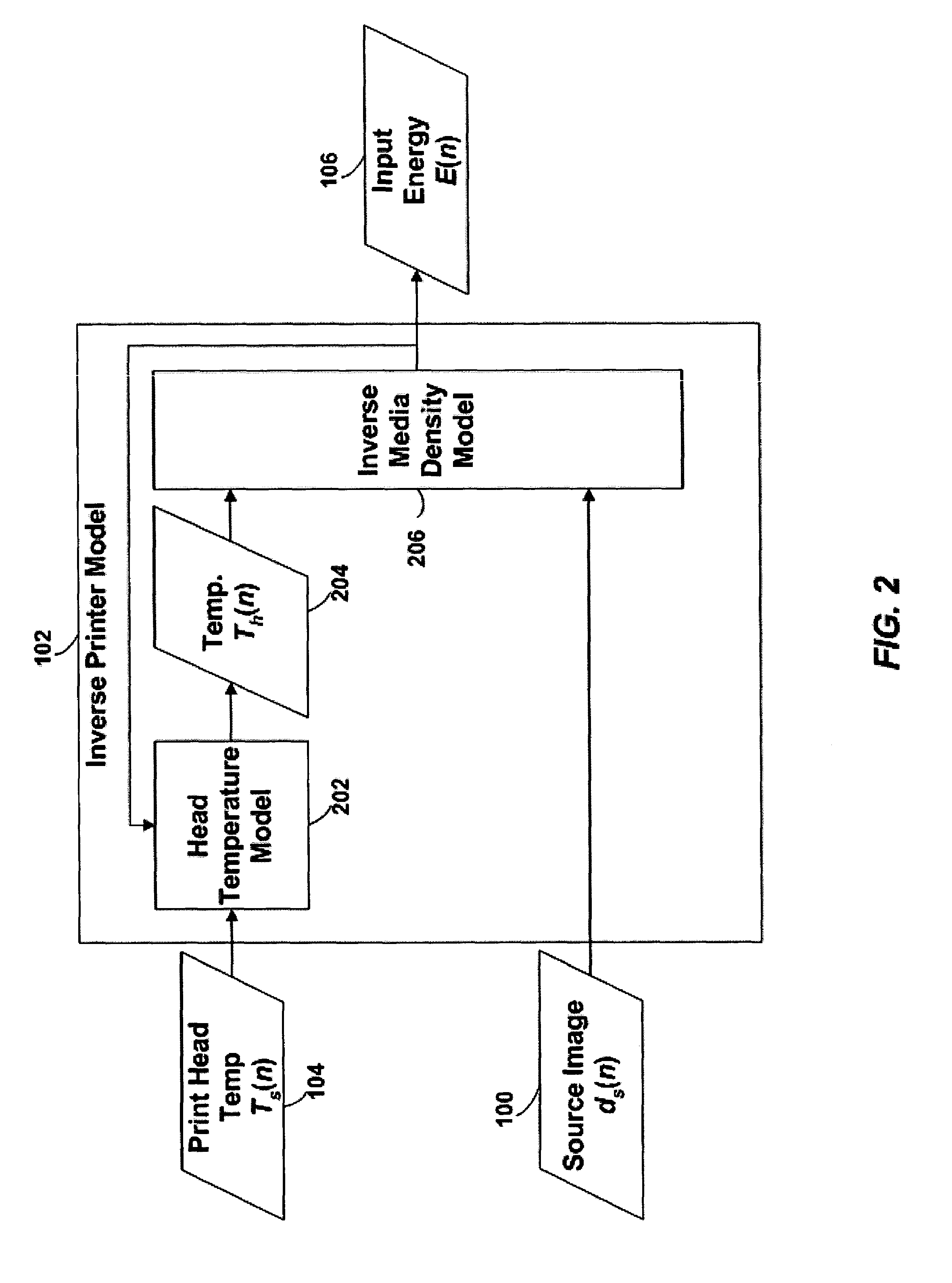Thermal response correction system
a correction system and thermal technology, applied in printing and other directions, can solve the problems of affecting the quality of affecting the quality of reducing the density of the output produced by the print head element,
- Summary
- Abstract
- Description
- Claims
- Application Information
AI Technical Summary
Benefits of technology
Problems solved by technology
Method used
Image
Examples
Embodiment Construction
[0026]A model of a thermal print head is provided that models the thermal response of thermal print head elements to the provision of energy to the print head elements over time. The amount of energy to provide to each of the print head elements during a print head cycle to produce a spot having the desired density is calculated based on: (1) the desired density to be produced by the print head element during the print head cycle, (2) the predicted temperature of the print head element at the beginning of the print head cycle, (3) the ambient printer temperature at the beginning of the print head cycle, and (4) the ambient relative humidity.
[0027]The above-referenced patent application entitled “Thermal Response Correction System” disclosed a model of a thermal print head that models the thermal response of thermal print head elements to the provision of energy to the print head elements over time. The history of temperatures of print head elements of a thermal print head is referre...
PUM
 Login to View More
Login to View More Abstract
Description
Claims
Application Information
 Login to View More
Login to View More - R&D
- Intellectual Property
- Life Sciences
- Materials
- Tech Scout
- Unparalleled Data Quality
- Higher Quality Content
- 60% Fewer Hallucinations
Browse by: Latest US Patents, China's latest patents, Technical Efficacy Thesaurus, Application Domain, Technology Topic, Popular Technical Reports.
© 2025 PatSnap. All rights reserved.Legal|Privacy policy|Modern Slavery Act Transparency Statement|Sitemap|About US| Contact US: help@patsnap.com



